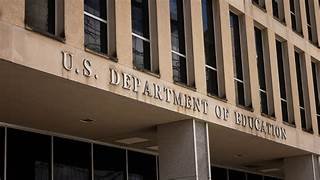In a dramatic and unprecedented decision, the Supreme Court has granted former President Donald Trump the authority to fire hundreds of Education Department employees and fundamentally dismantle the agency. The ruling marks a turning point in American governance and education, stirring both celebration and concern across the nation. His decision, which reverberated through political circles and public institutions, underscores a powerful shift in how federal agencies can be restructured. For supporters of Trump and advocates of government downsizing, this is a historic moment that opens the door for a bold new direction in public education policy. For others, it signals a concerning rollback of established institutional frameworks.
A Pivotal Supreme Court Ruling
At the heart of the matter was the question of presidential authority over federal agencies. The Supreme Court, in a landmark ruling, determined that the President has the constitutional right to fire certain federal employees—particularly those not directly appointed by him—and reshape or even dismantle parts of agencies that fall under the executive branch.
In this case, the ruling specifically impacted the Department of Education, giving Trump the legal power to remove a significant number of officials and reimagine the department’s structure. While this action might seem drastic, the ruling has been praised by those who believe the federal government has become bloated, inefficient, and disconnected from the needs of the people.

Trump’s Vision for Education
Donald Trump has long expressed skepticism toward the federal Department of Education. During his presidency, he repeatedly called for its downsizing or even full elimination, arguing that education should be handled primarily at the state and local level.
Now, with the Supreme Court’s ruling on his side, Trump has taken swift steps toward fulfilling that vision. According to insiders close to the former President, Trump believes that education reform is vital to America’s future—and that federal interference has led to declining standards, politicized curricula, and wasted taxpayer money.
Trump’s supporters say he is simply delivering on promises made years ago: to return power to the states, cut government waste, and make American education great again by focusing on real results rather than bureaucratic red tape.
Mass Firings and Structural Changes
With the legal green light, Trump has already begun the process of terminating hundreds of Education Department workers. Many of these individuals were long-time civil servants, often protected by complex regulations that previously made termination nearly impossible.
This shake-up is not just about firings; it represents a larger plan to reconstruct how education policy is managed. Trump’s team is reportedly considering transferring many of the department’s core functions to the states or consolidating them under smaller federal offices with limited scope.
The firings are expected to be followed by budget cuts, office closures, and a sweeping internal audit of all federal education programs. Critics have called the move abrupt and harmful, but supporters argue it’s a much-needed correction after decades of bureaucratic excess.
Supporters Applaud the Decision
Conservatives, education reform advocates, and fiscal hawks have celebrated the ruling. They argue that the federal Department of Education has long overstepped its bounds and that real change can only come through bold action.
Many Republican leaders view the Supreme Court’s decision as a restoration of presidential power and a validation of their belief in limited government. They say Trump is showing political courage by confronting powerful institutions that resist change.
Supporters believe the decision will energize Trump’s voter base, especially parents and local educators who feel Washington has failed them. In their view, this is not just about education—it’s about restoring freedom, accountability, and efficiency to the government.

Critics Warn of Chaos and Disruption
On the other side of the aisle, Democrats and public education advocates are raising alarms. They fear that the mass firings and dismantling of the Education Department could lead to confusion, instability, and harm to millions of students across the country.
Many educators worry about the fate of federal programs that support low-income schools, special education, and student loans. Without a central agency to coordinate and enforce education policy, they argue, states may struggle to maintain consistent standards.
Critics also warn that political motivations—not educational expertise—may drive Trump’s decisions, potentially widening disparities and undermining national progress.
A Debate Over the Role of Government
At its core, this ruling has reignited a national debate over the role of the federal government in education. For decades, the Department of Education has served as a central authority overseeing standards, funding, and civil rights compliance. To some, this centralization was necessary to ensure equality and progress. To others, it symbolized federal overreach and inefficiency.
Trump’s move—and the Supreme Court’s support—suggest a return to a more decentralized model. Whether that leads to innovation or fragmentation remains to be seen.
The decision also raises important constitutional questions about the power of the presidency. While the ruling empowers Trump, it sets a precedent that could affect future administrations, Democrat or Republican, for years to come.
Impact on the 2024 Election and Beyond
The timing of this decision could not be more significant. As Trump continues his campaign for the 2024 presidential election, this victory gives him a powerful talking point. He can now position himself as the only candidate with the courage and legal backing to “drain the swamp” and rebuild America’s institutions.
The move will likely energize his base, particularly those disillusioned with the status quo in Washington. It also reinforces Trump’s brand as a disruptor—someone unafraid to challenge the establishment and follow through on bold promises.
However, the backlash may also mobilize opposition. Educators, unions, and progressive leaders are already organizing campaigns to resist the changes and rally public support for rebuilding the department under a different administration.
Looking Ahead: A New Era for Education Policy
Whether one sees this as a triumph or a tragedy, one thing is clear: the decision marks the beginning of a new era for federal education policy in America. The ripple effects will be felt not just in Washington, but in every school district, classroom, and home.
The road ahead is uncertain. With fewer centralized resources, states will have more freedom—but also more responsibility. Success will depend on how well they adapt, innovate, and meet the unique needs of their students.
Some may rise to the occasion and become models of educational excellence. Others may struggle with limited funding and inconsistent policies. The future of American education, in many ways, now rests in the hands of governors, school boards, and local leaders.
A Defining Moment in American History
This moment will likely be remembered as one of the most defining legal and political shifts in recent history. The Supreme Court’s decision doesn’t just impact the Department of Education—it redefines the balance of power between the branches of government and challenges long-held assumptions about the federal role in everyday life.
Trump’s move to dismantle the agency may be controversial, but it is undeniably bold. Whether it leads to renewal or regret, reform or ruin, will depend on how the nation responds.
What is certain is that history is being written right now. The headlines, classrooms, courtrooms, and campaign trails are all watching closely. The next chapter in America’s education story is underway—and it’s unlike anything we’ve seen before.
Also read: Laura Gillen: A Leader in Local Politics and Community Advocacy






